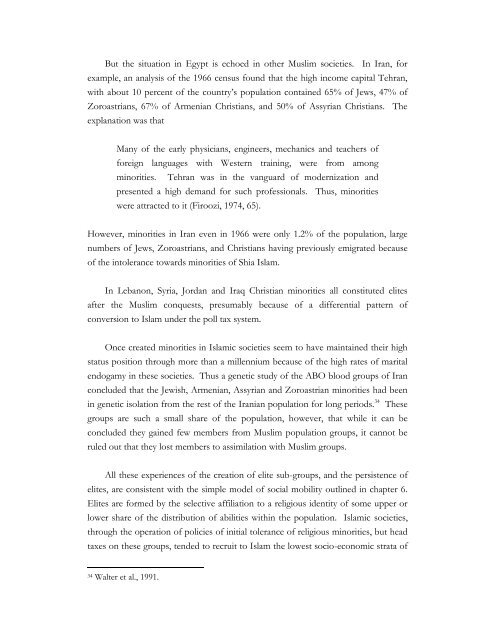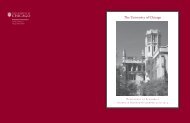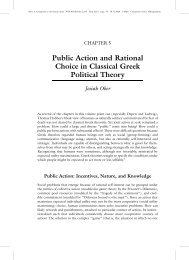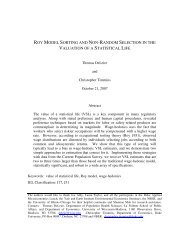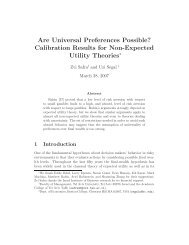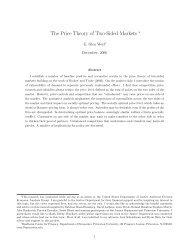Surnames and a Theory of Social Mobility - University of Chicago ...
Surnames and a Theory of Social Mobility - University of Chicago ...
Surnames and a Theory of Social Mobility - University of Chicago ...
You also want an ePaper? Increase the reach of your titles
YUMPU automatically turns print PDFs into web optimized ePapers that Google loves.
But the situation in Egypt is echoed in other Muslim societies. In Iran, for<br />
example, an analysis <strong>of</strong> the 1966 census found that the high income capital Tehran,<br />
with about 10 percent <strong>of</strong> the country’s population contained 65% <strong>of</strong> Jews, 47% <strong>of</strong><br />
Zoroastrians, 67% <strong>of</strong> Armenian Christians, <strong>and</strong> 50% <strong>of</strong> Assyrian Christians. The<br />
explanation was that<br />
Many <strong>of</strong> the early physicians, engineers, mechanics <strong>and</strong> teachers <strong>of</strong><br />
foreign languages with Western training, were from among<br />
minorities. Tehran was in the vanguard <strong>of</strong> modernization <strong>and</strong><br />
presented a high dem<strong>and</strong> for such pr<strong>of</strong>essionals. Thus, minorities<br />
were attracted to it (Firoozi, 1974, 65).<br />
However, minorities in Iran even in 1966 were only 1.2% <strong>of</strong> the population, large<br />
numbers <strong>of</strong> Jews, Zoroastrians, <strong>and</strong> Christians having previously emigrated because<br />
<strong>of</strong> the intolerance towards minorities <strong>of</strong> Shia Islam.<br />
In Lebanon, Syria, Jordan <strong>and</strong> Iraq Christian minorities all constituted elites<br />
after the Muslim conquests, presumably because <strong>of</strong> a differential pattern <strong>of</strong><br />
conversion to Islam under the poll tax system.<br />
Once created minorities in Islamic societies seem to have maintained their high<br />
status position through more than a millennium because <strong>of</strong> the high rates <strong>of</strong> marital<br />
endogamy in these societies. Thus a genetic study <strong>of</strong> the ABO blood groups <strong>of</strong> Iran<br />
concluded that the Jewish, Armenian, Assyrian <strong>and</strong> Zoroastrian minorities had been<br />
in genetic isolation from the rest <strong>of</strong> the Iranian population for long periods. 34 These<br />
groups are such a small share <strong>of</strong> the population, however, that while it can be<br />
concluded they gained few members from Muslim population groups, it cannot be<br />
ruled out that they lost members to assimilation with Muslim groups.<br />
All these experiences <strong>of</strong> the creation <strong>of</strong> elite sub-groups, <strong>and</strong> the persistence <strong>of</strong><br />
elites, are consistent with the simple model <strong>of</strong> social mobility outlined in chapter 6.<br />
Elites are formed by the selective affiliation to a religious identity <strong>of</strong> some upper or<br />
lower share <strong>of</strong> the distribution <strong>of</strong> abilities within the population. Islamic societies,<br />
through the operation <strong>of</strong> policies <strong>of</strong> initial tolerance <strong>of</strong> religious minorities, but head<br />
taxes on these groups, tended to recruit to Islam the lowest socio-economic strata <strong>of</strong><br />
34 Walter et al., 1991.


